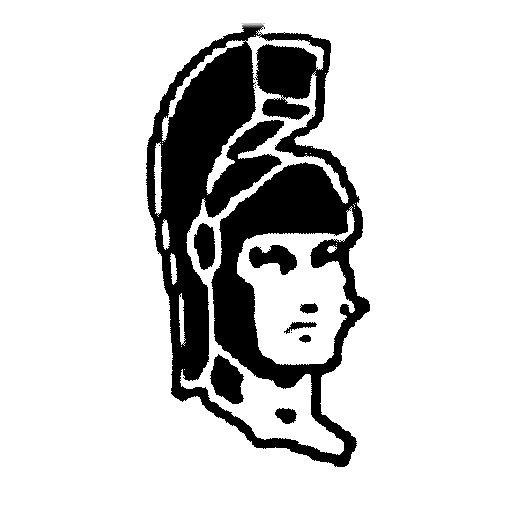
A History of Trojan Limited


1913
Leslie Hounsfield completed his prototype Trojan car. This car used Hounsfield’s own unique design of two stroke engine which could propel the car along at a giddy 13 miles per hour.
1914
In 1914 Leslie Hounsfield founded the engineering Company Trojan Limited in a small workshop in Clapham London. Though they very soon moved to larger premises in Vicarage Road Croydon.

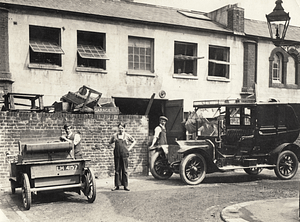
First World War
Through the First World War Trojan Ltd mainly manufactured gauges for the war effort but did carry on with vehicle development.
1922
After the war vehicle development continued but it was general engineering which kept the company going. Then in 1922 Trojan, who were still a very small company, struck a deal with Leyland Ltd for Leyland to manufacture and market what was now called the Trojan Utility car.


1924
Trojan quickly developed a van version of their car which proved to be very popular as they were very simple to drive and quite economical. Their biggest customer was Brooke Bond Tea who used an exclusive fleet of Trojans to deliver tea to the shops around the country, though other big fleets included the Post Office and Watermans Laundry.
1925
In 1925 Trojan introduced a larger bodied Trojan car called the Three Door Tourer. This model had greater rear passenger space plus a single rear door on the pavement side. The option of pneumatic tyres was also introduced so giving a more comfortable ride.


1928
1928 saw the introduction of a posher canvas bodied saloon car, known as the Achilles with a roll backed roof version the Apollo but as they still enjoyed Trojan’s top speed of 35 mph they were not terribly successful.
In the late 20’s Trojan ended it’s relationship with Leyland and started to do the full manufacturing of it’s vehicles at their Purley Way factory.
1929
In 1929 a new design of car the Trojan RE was introduced, The engine was located in a box at the back.
1929 also saw Trojan experimenting with tracked vehicles for the army and supplying basic trucks to the RAF, the tracked vehicles never went into full production.



1930
Trojan launched a marine version of their car engine and in conjunction with the Windermere boat builder Borwicks they produced a Trojan powered launch called The Trojan.
1931
At this time Trojan were producing a large number of products either as contract work or their own inventions. Two of the most successful, successful as they are both still in production to this day, are the Hounsfield Tensometer for testing the tensile strength of metals and the Hounsfield camp bed.



1935
The Trojan RE had not been a success, so in 1935 Trojan showed an entirely new car the Mastra, this now had a six cylinder engine in the back. But only 3 prototypes were made, Trojan now abandoned car manufacture and concentrated on vans. Trojan Introduced a new larger van, the Trojan Senior. This still had the engine under the floor, but the forward control design gave more internal space.
Second World War
At the outbreak of the Second World War Trojan were instructed by the government to stop vehicle production immediately, as it was seen that their engineering skills were of far greater importance to the war effort. They still produced large quantities of shell cases and bombs but were also responsible for many of the more highly engineered parts for tanks and planes. They did however make some more recognisable products during this time. They produced a small hand pulled trolley which used the standard pre war car and van wheels. This trolley was used as a small bomb trolley, and oil bowser for servicing planes, but more conspicuously as a Trolley Acc, which was effectively the starter battery pack wheeled out to Spitfires Lancasters and Hurricans to start their engines.


1946
After the war Trojan released a completely new van, now much bigger and apart from the engine quite conventional with a three speed standard gear box. The engine was a supercharged version of their pre-war engine.
1949
Trojan introduced a completely new product the Trojan mini-motor. This was a small 50cc engine which clipped onto a standard push bike so converting it into a moped. As real mopeds and motorbikes were very hard to get at this time they proved to be a great success with over 50,000 produced over the next 5 years.
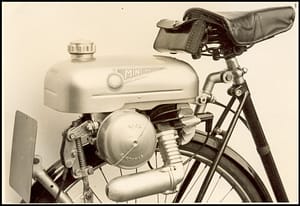
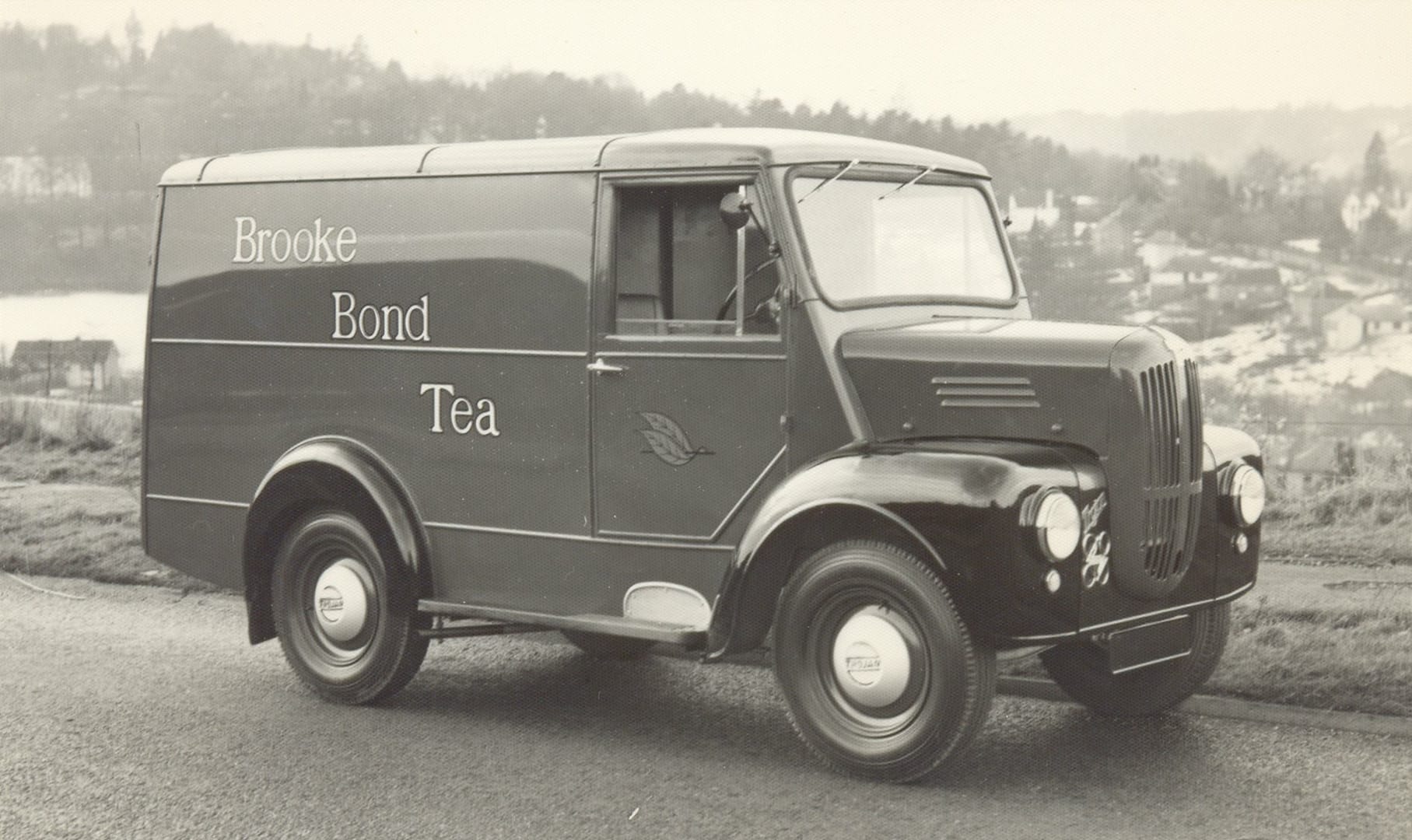
1953
The standard van was redesigned in 1953 and Trojan fitted it with a Perkins diesel engine, making it the first small van to be diesel powered and solving the fuel consumption issue of their vans.
1957
A trailer mounted corn drying fan was developed, the Trojan Airator. Trojan starts to produce all steel vans.
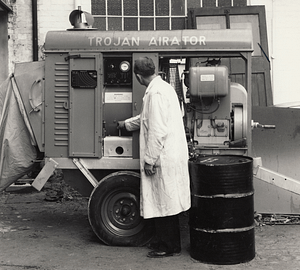
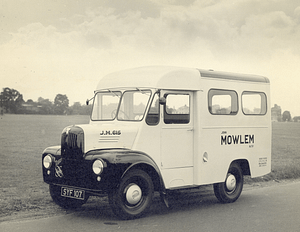
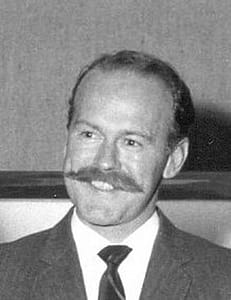

Early 1959
By the late 50’s Trojan Ltd was in real financial trouble losing over £400,000 a year. This is when Peter Agg stepped in and bought the company. Peter Agg had made his fortune by being the sole importer of Lambretta scooters. He now combined the two businesses on the Trojan site.
Late 1959
Forward control vans and 13 seater buses replaced existing vans. Peter Agg had seen Go Karting out in America and started to manufacture the TroKart and so introduced karting to the UK.
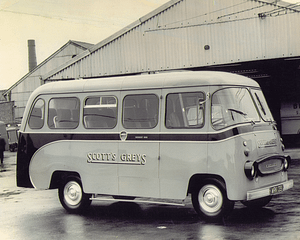
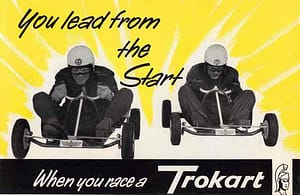

1961
A garden tractor was introduced called the Toraktor, you could by various implements including trailers, rotavators, lawn mowers and snow ploughs.
1962
Trojan bought the international rights to the Heinkel bubblecar and manufactured them as the Trojan 200, but still using the Heinkel engine. Trojan bought the Elva sports car company and eventually started to manufacture the Elva Courier at the Trojan works.
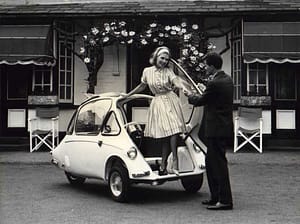
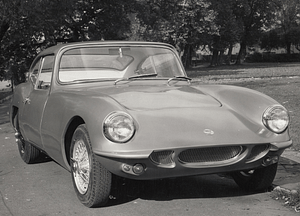
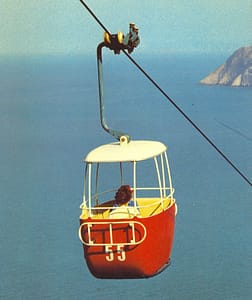
1967
Trojan manufactured fibre glass cable Car cabins. Supplying them to Expo 67 in Montreal, Llandudno and Fort Regent.
1968
Trojan struck a deal with Bruce McLaren to manufacture all of their non Formula One racing cars, including the famous M8’s. They even made the first McLaren road car.
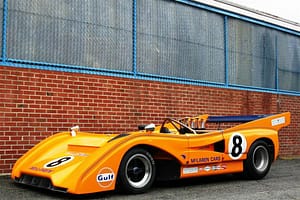
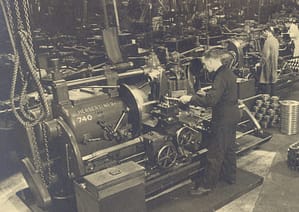
1973
Trojan Engineering, a few years after being sold to Percy McNally, finally closes Down.
1974
After Bruce McLaren was killed in an accident Trojan lost the McLaren contract and so switched to making it’s own racing cars. They even had their own Formula One team in 1974 with Tim Schenken as their driver.
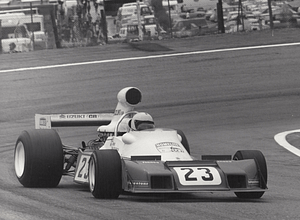
2013
Trojan Ltd carried on supplying parts for racing cars through the 70’s, but Peter Agg was now making his next fortune by being the sole importer of Suzuki Motorbikes. The Trojan site was gradually sold off and Trojan briefly became a classic car restorer in the 1990’s and then finally a property holding company. It was finally shut down in 2013 after Peter Agg’s death.
